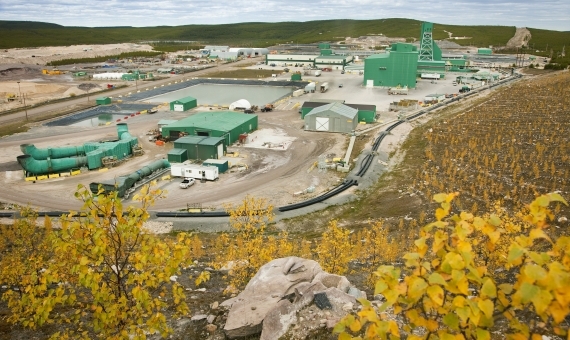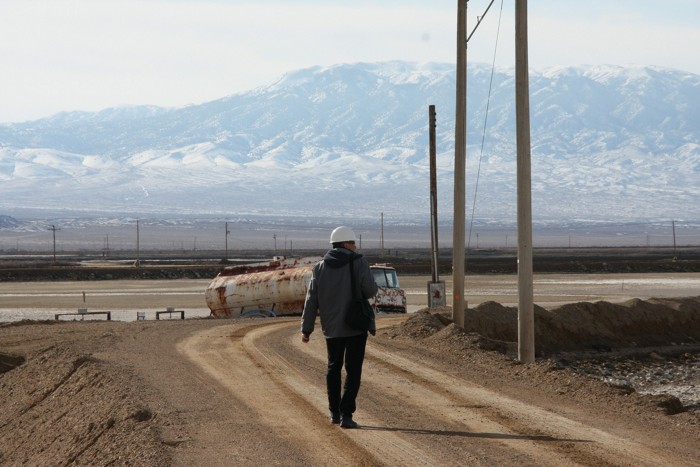Cameco pivots into profit as Ukraine war knocks uranium supplies

Cameco (TSX: CCO; NYSE: CCJ) has swung into profit after uranium prices rose when the war in Ukraine sidelined Russian supplies and as the push to reduce greenhouse gases accelerated.
The Saskatoon-based company on Thursday reported net profit of C$89 million last year versus a loss of C$103 million in 2021. Revenue rose to C$1.9 billion in 2022 from C$1.5 billion the year before.
Cameco, the leading uranium producer in Canada, which vies with Namibia as the second-largest provider behind Kazakhstan, benefited from increased demand for nuclear power to help fight climate change, unrest in Kazakhstan and the Russian invasion of Ukraine. The company signed a record number of contracts to sell some 80 million lb. of the metal and resumed output from its McArthur River and Key Lake operations.
“Nuclear is back on with a vengeance and then of course the Russia situation has just really pushed it forward,” Cameco chief executive officer Tim Gitzel told BNN Bloomberg TV on Thursday. “Things are looking really good for us.”
Cameco is preparing to complete by mid-year the joint acquisition with Brookfield Renewable Partners (NYSE: BEP) of nuclear plant builder Westinghouse in a $7.9 billion deal that will complement Cameco’s fuel business, Gitzel said.
Ukraine deal
On Wednesday, Cameco agreed with Ukraine’s nuclear authority to supply the embattled country with all its uranium fuel from next year through 2035. The deal to sell the equivalent of about 40 million to 68 million lb. uranium oxide is probably the company’s largest single transaction, Gitzel said.
It’s part of a push into Eastern Europe as countries such as Poland and Czech Republic also shun the Russian supplies of nuclear fuel and technology on which they’d been dependent, he said.
“We were just delighted to step up in Ukraine and I can tell you there’s more to come,” Gitzel said on television. “Those are our friends over there and we see what they’re going through.”
The company plans to produce 18 million lb. of uranium a year from McArthur River and Key Lake at full capacity starting next year, efforts Cameco said it expects will “significantly improve” financial results. Any decision to increase output to 25 million lb. annually, the licensed limit, would depend on further improvements in the uranium market and securing long-term contracts, the company said.
Cigar Lake will also continue at full capacity producing 18 million lb. annually, it said. Output from Inkai in Kazakhstan is to follow the 20% reduction planned by the state-run nuclear authority Kazatomprom until the end of this year.
Cameco plans to expand uranium hexafluoride production at its Port Hope, Ont. conversion facility to 12,000 tonnes a year by 2024 to meet contract obligations while prices reach record highs.
The company said its loss of C$15 million in the fourth quarter, compared with an C$11 million profit in the year-ago period, was due to quarterly variations in contract deliveries. Adjusted net earnings for the quarter were C$36 million, it said.
The nuclear industry weathered its own downturn in the decade following the 2011 Fukushima disaster in Japan as some nations such as Germany reduced reliance on nuclear power, uranium prices fell to less than $18 a lb. and Cameco had to cut costs and operations. Now the spot price is back to about $51 a pound.
While there may be current headwinds of high inflation and potential recession in parts of the world, Cameco has been able to sidestep some higher prices by restarting plants that had been mothballed during the difficult years, Gitzel said.
“We don’t have the big capex risks that others would have,” Gitzel said. “We have the facilities built. We just have to turn them on and that’s what we’re doing.”
{{ commodity.name }}
{{ post.title }}
{{ post.date }}


Comments